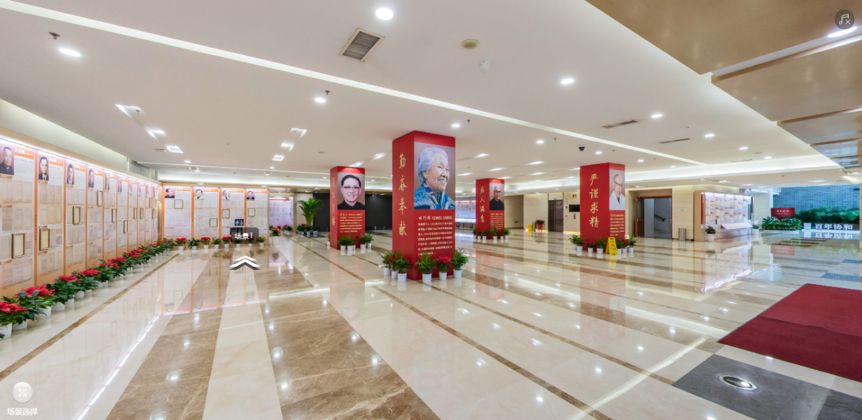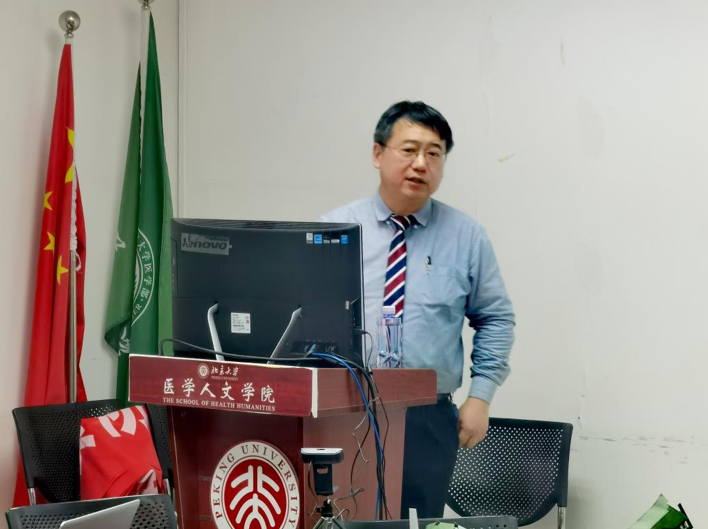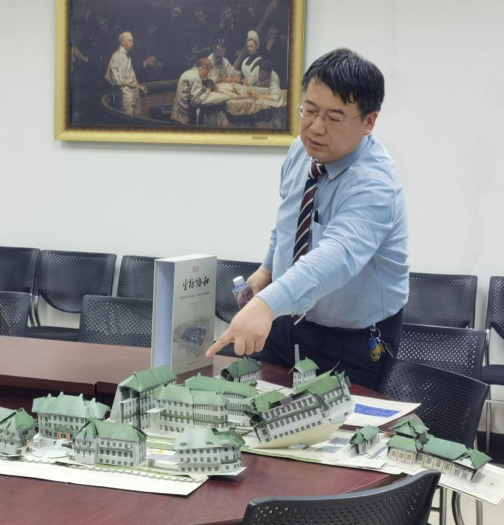The 91st Peking University Medical Humanities Forum: Report by Dr. Li Naishi about Medical Records of Peking Union Medical College Hospital
On November 29, 2021, the 91st Peking University Medical Humanities Forum, entitled “Valuable Information left in Medical Records: Pursuing the Chinese Imprint of Modern Medicine from Medical Records”, was held in Room 620, Yifu Building of Peking University Health Science Center. Li Naishi, chief physician from the Endocrinology Department of Peking Union Medical College Hospital (PUMCH) and visiting professor of the School of Humanities and Social Sciences of Peking Union Medical College (PUMC), was invited to give the lecture. The lecture was host by Chen Qi, associate professor in the School of Medical Humanities, Peking University. Zhang Daqing, professor in the School of Medical Humanities, Peking University, served as the commentator. Based on the PUMCH’s Centennial Exhibition of Medical Records, and combined with his years of research experience and rich knowledge, Dr. Li Naishi gave the lecture, mainly focused on the collection and research process of PUMCH’s medical records as important medical documents, as well as PUMCH’s height, depth, and temperature shown in the 100-year medical record.

Figure 1 PUMCH’s Centennial Exhibition of Medical Records
First, Dr. Li Naishi introduced the PUMCH’s Centennial Exhibition of Medical Records with 3D cloud exhibition, and talked about how it was transitioned from a temporary exhibition to a special exhibition as well. Dr. Li Naishi believes that medical records, as the carrier of faithful records of medical behaviors in each era, are unique materials for studying the history of modern medicine in Chinese, and they are also the most important part that shows the spirit and humanistic care of PUMCH after the introduction of Western medicine.
The PUMCH’s Centennial Exhibition of Medical Records is composed of six parts, including “Preface”, “Medical Giants”, “Passing the Flame”, “Great Achievements”, “Scaling New Heights” and “Postscript”. Each part has its own theme. “Medical Giants” shows the elaborate medical records of the leading figures in modern Chinese medicine such as Chang Hsia Ch’ien (Zhang Xiaoqian), Lin Chao-chin (Lin Qiaozhi) and Tseng Hsien Chiu (Zeng Xianjiu). The medical records of various periods and forms including the hospital admission records, medical history records, surgical records are exhibited in“Passing the Flame”. “Great Achievements” exhibited the milestone progress in medical technology and the contributions of generations of PUMCH people to world medicine. And “Scaling New Heights” is the exhibition of typical medical records with departments as the unit. Dr. Li Naishi said that the history of PUMCH’s medical records is also the history of PUMCH’s spirit and culture.
Medical records could help medical historians know more about the history of PUMCH in the past century, but there are also many difficulties and challenges. Due to the popularity of Wade-Giles romanization and the the existence of a large number of dialect pinyin at that time, identifying the signature and matching the chief physician with the medical record became the major difficulty of the preparatory group for the PUMCH’s Centennial Exhibition of Medical Records in the preparation process. Dr. Li Naishi took the signature of Samnel Zia (Xie Shaowen) as an example to show how they dealt with the difficulty.

Figure 2 Dr. Li Naishi is giving the lecture.
In the second part of the lecture, Dr. Li Naishi introduced the history of the founding of PUMCH, including the original intention of the establishment, the assistance of the Rockefeller Foundation of the United States, and the close relationship between PUMCH and the Johns Hopkins University School of Medicine. Generations of PUMCH people have worked hard to realize the vision of “building the best medical center in Asia”, which is vividly reflected in their medical records. Dr. Li Naishi tried to elaborate this with several examples: Zhang Naizheng, the pioneer and founder of rheumatology in China, hand-printed the 3D reconstruction schematic diagram of abdominal lesions based on X-ray and palpation during his residency; Hsü Ying K‘uei (Xu Yingkui) creatively used electrocardiograph to record the patient’s muscle action potential; Chang Hsia Ch’ien accurately diagnosed a rare metabolic disease, which was the first case of tumor induced osteomalacia diagnosed in China.
In the third part of the lecture, Dr. Li Naishi handed over the large 3D book, named The PUMC Campus: A Tour of Its History donated by the Chinese Medical Board, to Department of History & Philosophy of Medicine, Peking University Health Science Center. He presented the book to the audiences and gave a brief introduction to the old-fashioned buildings and newly built buildings of PUMCH located in Dongdan, Beijing.

Figure 3 Dr. Li Naishi is presenting The PUMC Campus: A Tour of Its History .
Finally, Dr. Li Naishi gave detailed answers to the questions raised by online and offline teachers and students. He discussed with them on the relationship between PUMCH and PUMC, the development of blood glucose measurement technology, and the concept of medical records. Dr. Li Naishi pointed out that more than 100,000 well-preserved medical records in PUMCH are rare and precious materials for the study of medical history, and can also provide a new perspective for the study of modern Chinese medical history. From PUMCH’s hand-written medical records in the past to the convenient and fast electronic medical records today, medical records, as the important source of medical history, need to be recognized by more people. Meanwhile, the narrative of medical history should also rely on the integration of humanities and medical spirit.
He Xinyue, Chen Qi ; School of Health Humanities


